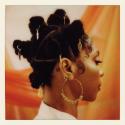The Barbican brought two of the great originals of contemporary music together last night. Ralph Towner and Egberto Gismonti are temperamentally very different, but complement one another wonderfully, in an inspired piece of programming. Both are stylistically polyglot, straddling contemporary classical technique as well as jazz and, in Gismonti’s case especially, a range of folk idioms. Like two paths taking different routes up a mountain, they have both reached peaks of remarkable musical achievement, but taken different routes, and offered different views along the way.
Where Towner was intensely calm and sincere, his music distinguished by dazzlingly intricate harmonic variation, and a quietly virtuosic style, Gismonti’s unusual 10-string acoustic jangled and growled with Latin rhythms, his playing just as virtuosic but a lot more ostentatious. Towner began his set shrouded in blue and red smoke, as if the Barbican’s special effects people were expecting Lady Gaga instead, but not even the Jubilee fireworks could have distracted his unshakeable inner composure. Apart from announcing tracks, he seemed oblivious to the audience: despite the vastness of the Barbican Hall, it felt as if the audience were eavesdropping on a private event.
With a scarlet bandana over his frizzy steel-grey mane, Gismonti looked a little like Red Riding Hood and the wolf in one
Towner began with five of his own compositions, which had intimate, yet slightly sinister titles, like “The Prowler”, “If”, and “Solitary Woman”. He dismembered the harmony of each piece, rummaging through while fragments of melody sparkled like gold dust in the prospector's pan, and extraordinary chords cascaded over one another. The second half of his set was mostly standards; he made even the most saccharine of these into expressions of yearning and austerity: in Towner’s version, “My Foolish Heart” sounded as if it was having a thorough examination on the psychoanalyst’s couch. Playing both classical and 12-string guitars, the latter giving his sound a gutsy, even funky edge, the predominant stylistic echoes were from the classical world. Some repeated phrases suggested moments of minimalism, while the harmonic complexity of his playing inevitably evoked Bach, and twentieth-century advocates of the fugue like Shostakovich. Eventually, though, the fact that he dissected each tune so thoroughly left some sounding quite similar.
Gismonti, by contrast, cut a deliberately showmanlike figure, with a scarlet bandana over his frizzy steel-grey mane, so that he looked a little like Red Riding Hood and the wolf in one, which seemed to sum up his combination of studiousness and stylistic rapacity perfectly. Gismonti’s musical education includes everything from classical composition to a spell with the Xingu Indians of the Amazon, and a dazzling eclecticism of both form and content quickly emerged as the defining feature of his performance. The exploitation of rhythm was much more prominent than with Towner: this included sections plucking notes with his left hand while rapping a beat on the body of the guitar with his right. Even more extraordinary guitar technique was to follow; for the most part, it was brilliant, though Gismonti needed to balance so much brilliance with a little shade. Playing the second part of his set on piano created a more classical tone, without the 10-string’s grizzle, but the desire for rhythm and spectacle remained. The moments of introspection were delicious but too rare.
Overleaf: Watch Egberto Gismonti live in Tokyo














Add comment